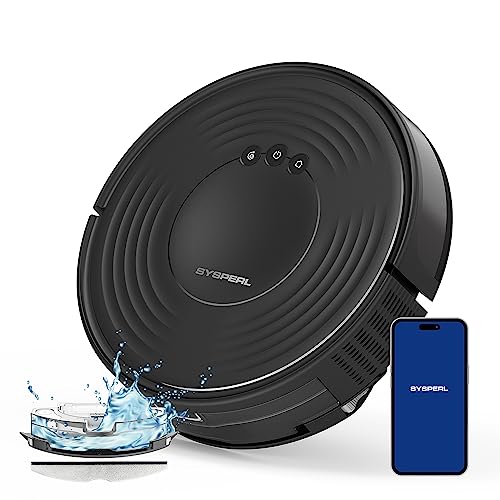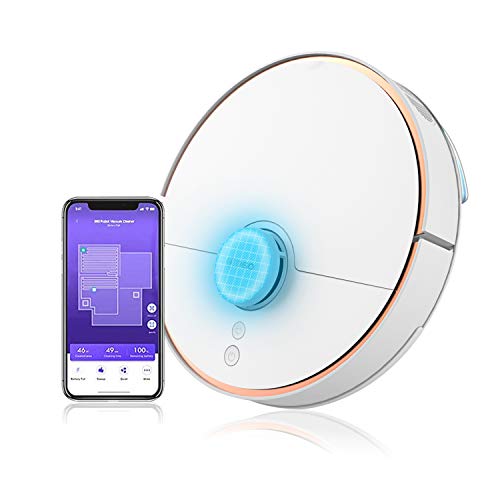
Robot Vacuum Mops
Add a review FollowOverview
-
Founded Date 24 de fevereiro de 1943
-
Posted Jobs 0
-
Viewed 347
Company Description
12 Companies That Are Leading The Way In Cleaning Robot Mop And Vacuum
 How to Take Care of a Robot Mop and Vacuum
How to Take Care of a Robot Mop and Vacuum
 A robot vacuum and mop can help you save time when cleaning. They also require regular maintenance such as emptying the dustbins and washing the reusable cleaning pads in conformity with the manufacturer’s guidelines, or removing the single-use ones and keeping the sensors clean.
A robot vacuum and mop can help you save time when cleaning. They also require regular maintenance such as emptying the dustbins and washing the reusable cleaning pads in conformity with the manufacturer’s guidelines, or removing the single-use ones and keeping the sensors clean.
Check out mapping features to avoid making repeated traverses of the same area and also app integration to create schedules, modify power settings and modes, and save maps of your home.
1. Clean the Dirt Bin
Most robot mops and vacuum cleaners require regular maintenance, which entails emptying dirt bins, cleaning pads and keeping track of replacement consumables. The more you take care of these parts more often, the longer your robotic mop and vacuum will last. Some cleaning robots require a little extra care in particular those with water tanks.
Firstly, empty the dirty dustbin completely following every cleaning session. This is one of the most basic tasks you could complete, yet it is vital for the smooth operation of your robot. It is also recommended to keep the filter clean regularly. Consult the user manual for your specific model to determine how often and how you should clean the filter.
Even though the mopping feature on your robot will remove a lot dust but a few tiny particles may still get caught in the gaps and cracks of your flooring. These include dandruff and hair flakes dirt, mites and dust as well as pet hair. To keep these particles from causing health issues it is crucial to occasionally make use of a vacuum cleaner or sweeping robots to clear these areas.
If you plan to use your mopping Best Robot Steam Mop, it is essential to select a model that has top-of-the-line equipment and large water and dust tanks. LEGEE is one of the largest dust bins as well as a water tank among its competitors. This means you won’t have to stop cleaning in order to refill the tank.
Do not add floor cleaners or vinegar into the water tank of your robot mop unless have been directed to do so by the manufacturer. These substances can damage the robot and invalidate its warranty.
A robot mop and vacuum are an excellent way to free up time, so you can spend it on other things that matter, like your family or work. Some stains and dirt are too stubborn for the robot to deal with. It is also crucial to periodically do a full cleaning session yourself with an ordinary vacuum cleaner to remove the tougher stains and clean areas that your robot isn’t capable of reaching.
2. The Cleaning Pads
Depending on what you use the mop from your robot the pads can become stained or dirty. It is essential to clean your cleaning pads regularly. This can be accomplished by putting them in the washing machine along with regular loads of laundry or by hand washing them. Avoid using fabric softener or dryer sheets, as these reduce the absorbency of the pad and cause it to not function effectively.
If your mop robot is also a vacuum cleaner, you will need to clean and empty its dust bin on a regular basis. Hybrid models that can vacuum and sweep using a dry mop are also affected. Many robot mops also come with brush attachments that require to be cleaned.
When you wash mop pads, make sure to thoroughly rinse them to get rid of any dirt and grime. You can also soak them in warm water for several minutes to break loose any debris that’s stuck. After they’re completely clean let the pads air dry or put them in the dryer on an extremely low temperature setting. It is recommended that you wash your pads every 2 to 3 months.
In the course of cleaning the mop or vacuum is often able to pick up small items that can cause damage to your robot’s sensors and other parts. You can avoid this by wiping the sensors clean with a microfiber cloth from time to time. This will allow the robot to see its way through the room without crashing into furniture or walls.
The majority of robot vacuums and mops are equipped with sensors on their base which are used to detect obstacles and ensure the machine doesn’t get caught in tight spaces. They can become clogged with dust and other particles which is why you’ll have to clean them regularly.
Some robot vacuums have a self-cleaning feature that you can utilize after every use. Visit the website of the manufacturer to see if your model has this feature. It typically takes about two or three minutes to run this process and is accessible through an app or button on the robot itself. This cycle should be performed often using a mop or vacuum to maintain the performance of sensors and other components.
3. Cleaning the Charging Station
The majority of robot mop cleaners spray water or cleaning solution directly onto the floor in order to soften the stains. They then scrub them with a scrubbing pads. Some mop pads are disposable as well as others that are designed to be cleaned and reused. It is essential to clean and empty your mop pads after cleaning sessions regardless of whether they are disposable or reusable. Follow the manufacturer’s instructions. It’s recommended to drain and let the mop base or docking station dry between use, in order to stop mildew from forming.
Robotic mops, as well as vacuum cleaners, require frequent maintenance to ensure they operate smoothly. This includes emptying and cleaning the dust bins and cleaning the sensors. If your mop comes with a dirt detector it is possible to wipe it down gently every few cycles to get rid of dust. This can block the sensors, causing navigation errors.
Many robot mop models come with an app that lets you save your home’s maps to set cleaning schedules, and even keep track of the time when the machine requires maintenance. If you plan on purchasing a mop, look for one that is connected to Wi-Fi, so you can use the app to control it from anywhere.
The Samsung Powerbot Vac + Mop is a top-rated model that includes smart features that help it clean the floors even when you are not home. The map function allows you to designate virtual boundaries and no-go zones for the robot. You can also manually direct it to clean an area of the room. Its vacuuming and mopping capabilities work on both carpeting and hard floors, making it an ideal option for homes that have both.
This 2-in-1 robot comes with an advanced object avoidance sensor that helps it navigate around objects such as furniture. It also comes with an automatic bin that can be emptying automatically, which reduces the amount of waste that has to be cleaned after every use. It is also programmable to run even while you’re away and is a great option for busy homeowners. It’s also quieter than other vacuums. This is ideal for people who have children or pets who are sensitive to noise.
4. Clean the Sensors
Most robot vacuums and some mop-and-vacuum combination models come with an application that lets you design automatic cleaning schedules, choose cleaning modes and monitor when the device needs maintenance. The app lets you manually clean, start, stop and change your robot’s settings from anywhere within the home.
The app is especially useful for robotic cleaners with maps features, such as lasers, cameras or optical dToF, which enable it to save a virtual map of the room and move around furniture. These features can cut down on the amount of staining that occurs on your floors and make cleaning less time-consuming.
If your robot’s mapping sensor gets dirty, it could be unable to navigate around your home. It is important to clean these sensors frequently like you would the lens of a camera or smartphone screen. This should be done using a dry, clean cloth. If you use a moist cloth or cleaner, you may damage the sensors and cause them to malfunction.
Also, it’s an ideal idea to clean the brushes of your robot vacuum regularly. This will help to avoid hair tangles and blockages of the motor. It also makes it easier for your robotic vacuum to remove dirt. It’s a good idea also to wipe down the primary roller brush since it’s usually responsible for picking dirt up and can build up lots of dust over the course of time.
Lastly, be sure to only use the cleaning products recommended by your robot’s manufacturer. Other floor cleaners may damage the machine and void your warranty. Most brands recommend a mix of vinegar and water or an approved cleaning solution specially designed for their robot. Don’t pour hot water or use a solution that contains abrasives, as they can damage the internal components and leave behind a messy dirt on your floors. Check out the owner’s manual for detailed instructions about how to clean your robot cleaner. This will ensure that it operates well and lasts for longer.

